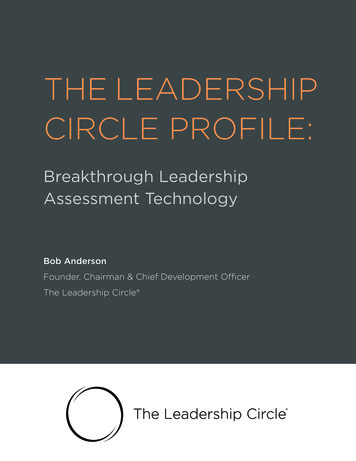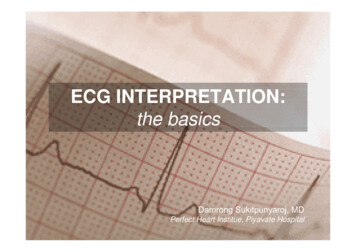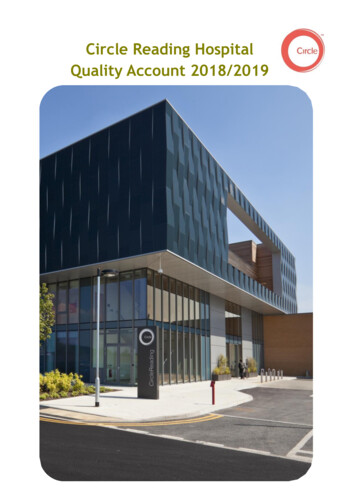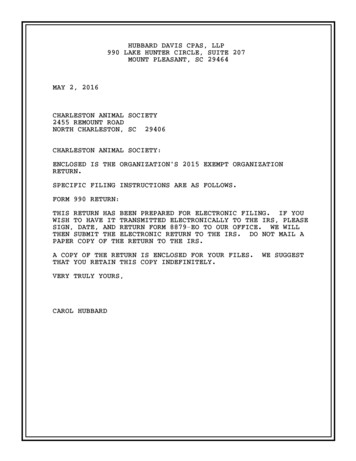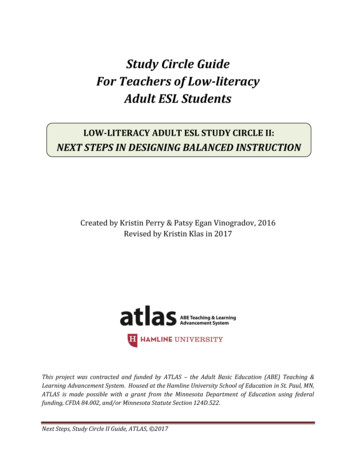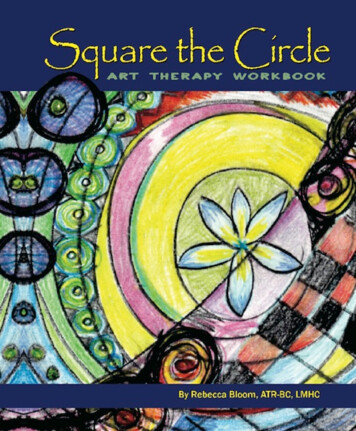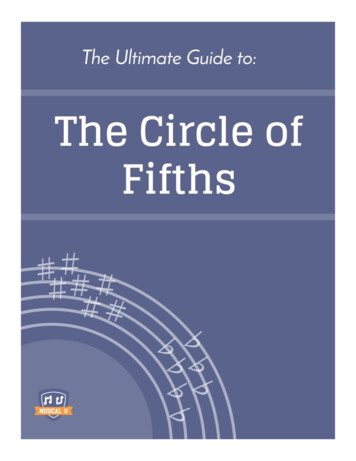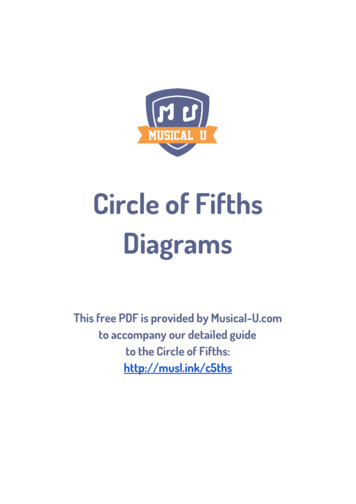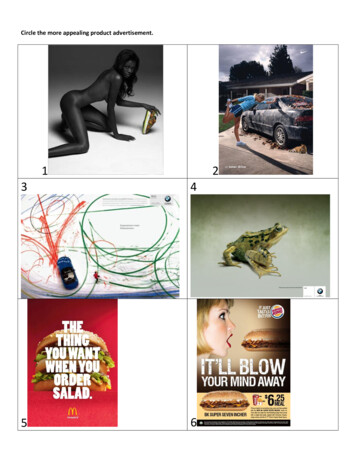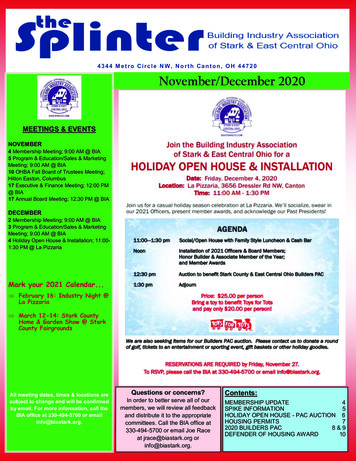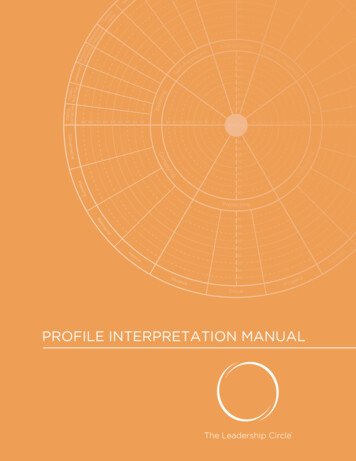
Transcription
PROFILE INTERPRETATION MANUAL
The Leadership Circle ProfileInterpretationManual
Table of ContentsIntroduction. 1Understanding Your Graphic Profile. 2Dimension Definitions. 2Interactions Within Your Profile. 5The Relating Dimension.Caring Connection.Fosters Team Play.Collaborator.Mentoring & Developing.Interpersonal Intelligence.7910121315The Self-Awareness Dimension.Selfless Leader.Balance.Composure.Personal Learner.1921232425The Authenticity Dimension. 29Integrity. 32Courageous Authenticity. 34The Systems Awareness Dimension.Community Concern.Sustainable Productivity.Systems Thinker.37394042The Achieving Dimension.Strategic Focus.Purposeful & Visionary.Achieves Results.Decisiveness.4547495052The Controlling 96062
The Protecting Dimension. 65Arrogance. 67Critical. 68Distance. 69The Complying Dimension. 71Conservative. 73Pleasing. 74Belonging. 75Passive. 76Reactive-Creative Scale. 79Relationship-Task Balance. 80Leadership Potential Utilization. 81Leadership Effectiveness. 82References. 83 Th e Lea der sh i p Ci r cl e LLC V er si o n T LC: 10. 2
IntroductionIntroduction to The Leadership Circle ProfileCongratulations! You are participating in the most comprehensive leadership assessment system available.The Leadership Circle Profile is unique for two reasons. First, we all know that great leadership is a complexmix of competency and inner states of being. This is the first competency tool to measure both the inner andouter aspects of leadership. Second, your report is much more than just a list of behavioral competencies. Itis organized into a very powerful system for understanding human behavior and development, as well as formaking sense of the interrelationships between the many dimensions of your self that are being evaluated.All your results are profiled in one large circular graph. This is to symbolize wholeness— your wholeness. Westart with the assumption that you are a marvelously complex and beautifully integrated whole person. ThisProfile tries to do justice to that.The Profile is arranged in a circle for another reason. It quickly shows how all of the dimensions integratewith each other. The interactions between dimensions are represented by their placement in the circle. Theseinteractions will be referenced again and again throughout the report.Layers of AnalysisThis report has two layers of analysis: Leadership Competencies Internal AssumptionsEach layer has a great deal of information about your leadership and about your life.The Leadership Circle Profile measures eighteen Leadership Competencies. These competencies have been wellresearched and shown to be the most critical behaviors and skill sets for leaders. You will be receiving feedbackon how you assess yourself on these competencies and your scores will be compared with how other managersevaluate themselves on these same competencies.The second layer of analysis measures internal assumptions. How we think, especially our habit of thoughtdetermines a great deal of our behavior. Behavioral habits, both effective and ineffective, are run by habitsof thought. This Profile measures eleven Internal Assumptions that limit effectiveness. It is our experience inworking with hundreds of managers, that over-extended and underutilized competencies, can usually be tracedto self-limiting assumptions. As with the competency feedback, your self-assessment will be compared withhow other managers evaluate their own thinking.Please remember as you read that no instrument can measure the truth about you. Some of it will seemaccurate. Some of it will seem inaccurate. Your job is to wade in and come up with a few key awarenesses thatwill positively influence your future development. To that end, think of The Leadership Circle Profile as a radarscreen for discovering the most significant strengths and weaknesses that need attention at this point in your life.Return to Table of Contents1
IntroductionUnderstanding Your Graphic ProfileThe Leadership Circle Profile is presented in a comprehensive graph. The inner circle displays eight dimensions.Each of these dimensions is a summary score for the dimensions in the outer circle. Understanding the circle isthe key to integrating all the information contained in your leadership survey.What do the numbers mean? All scales display a percentile score—that is, how you compare to a large group ofother managers who have used this survey. Low scores are close to the center and higher scores radiate furtherout from the center.How do I determine if a score is high or low? Scores above 66% are to be considered high, and scores below33% are to be considered low. Any scores that fall between 33% to 66% suggest that you will need to do somereflection on which aspects of high descriptions apply to you and which aspects of low descriptions apply as well.What do these dimensions measure? The definitions of the dimensions measured by your Profile are describedbelow. A more extensive description will follow.Dimension DefinitionsTHE CREATIVE LEADERSHIP COMPETENCIES measure key behaviors and internal assumptions that lead tohigh fulfillment, high achievement leadership.The Relating Dimension measures your capability to relate to others in a way that brings out the best in people,groups and organizations. It is composed of: Caring Connection measures your interest in and ability to form warm, caring relationships. Fosters Team Play measures your ability to foster high-performance teamwork among team membersthat report to you, across the organization, and within teams in which you participate. Collaborator measures the extent to which you engage others in a manner that allows the partiesinvolved to discover common ground in conflict situations, find mutually beneficial agreements, developsynergy, and create win-win situations. Mentoring & Developing measures your ability to develop others through mentoring, maintain growth enhancing relationships, and help people grow and develop personally and professionally. Interpersonal Intelligence measures the interpersonal effectiveness with which you listen, engage inconflict and controversy, deal with the feelings of others, and manage your own feelings.The Self-Awareness Dimension measures your orientation to ongoing professional and personal development,as well as the degree to which inner self-awareness is expressed through high integrity leadership. It iscomposed of: Selfless Leader measures the extent to which you pursue service over self-interest. It measures a veryhigh state of personal awareness where the need for credit and personal ambition is far less importantthan creating results—in collaborative relationships—which serve a common good. Balance measures your ability, in the midst of the conflicting tensions of modern life, to keep a heartybalance between business and family, activity and reflection, work and leisure.2 Th e Lea der sh i p Ci r cl e LLC V er si o n T LC: 10. 2Return to Table of Contents
Introduction Composure measures your ability, in the midst of conflict and high-tension situations, to remaincomposed and centered, and to maintain a calm, focused perspective. Personal Learner measures the degree to which you demonstrate a strong and active interest inlearning, personal and professional growth.The Authenticity Dimension measures your capability to relate to others in an authentic, courageous, and highintegrity manner. It is composed of: Integrity measures how well you adhere to the set of values and principles that you espouse; that is,how well you can be trusted to “walk your talk.” Courageous Authenticity measures your willingness to take tough stands, bring up the “un-discussibles”(risky issues the group avoids discussing), and openly deal with difficult relationship problems.The Systems Awareness Dimension measures the degree to which your awareness is focused on whole systemimprovement and on community welfare (the symbiotic relationship between the long-term welfare of thecommunity and the interests of the organization). It is composed of: Community Concern measures the service orientation from which you lead. It measures the extent towhich you link your legacy to service of community and global welfare. Sustainable Productivity measures your ability to achieve results in a way that maintains or enhancesthe overall long term effectiveness of the organization. Systems Thinker measures the degree to which you think and act from a whole system perspective aswell as the extent to which you make decisions in light of the long-term health of the whole system.The Achieving Dimension measures the extent to which you offer visionary, authentic, and high achievementleadership. It is composed of: Strategic Focus measures the extent to which you think strategically. Purposeful & Visionary measures the extent to which you clearly communicate and model commitmentto personal purpose and vision. Achieves Results measures the degree to which you are goal directed and have a track record of goalachievement and high performance. Decisiveness measures your ability to make decisions on time, and the extent to which you arecomfortable moving forward in uncertainty.THE REACTIVE LEADERSHIP STYLES reflect inner beliefs that limit effectiveness, authentic expression, andempowering leadership.The Controlling Dimension measures the extent to which you establish a sense of personal worth through taskaccomplishment and personal achievement. It is composed of: Perfect is a measure of your need to attain flawless results and perform to extremely high standards inorder to feel secure and worthwhile as a person. Driven is a measure of the extent to which you are in overdrive. Ambition measures the extent to which you need to get ahead, move up in the organization, and bebetter than others. Autocratic measures your tendency to be forceful, aggressive, and controlling.Return to Table of Contents3
IntroductionThe Protecting Dimension measures the belief that you can protect
achievement and high performance. Decisiveness measures your ability to make decisions on time, and the extent to which you are comfortable moving forward in uncertainty. THE REACTIVE LEADERSHIP STYLES reflect inner beliefs that limit effectiveness, authentic expression, and empowering leadership.
